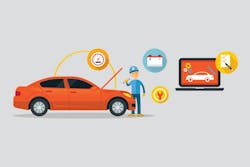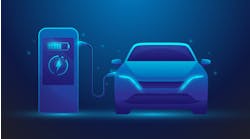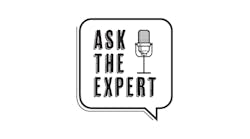How are you doing in regards to performing pre- and post-repair scans? Are you addressing new technology issues? Have you been educating yourself and your staff? Have you developed a plan that works for your business?
I fear there are some repairers that haven’t embraced addressing this critical part of collision repair. More and more OEMs have issued clear and direct position statements. I know there are some (repairers and insurers) who are skeptical, in many cases believing that the OEMs are exaggerating the need for scans and calibrations.
Some people believe they are protecting themselves by passing this responsibility to repairers. Some cite other OEM positions that create the impression of being self serving, such as prohibiting aftermarket parts, prohibiting aluminum wheel repair, and prohibiting paintless dent repair. Therefore they believe these new OEM positions are also self serving. I understand the concerns.
Yet, a major difference with the scan issue is that we cannot make an observation on the condition of the components without looking into the system through a scanner. And frankly, to take the risk of not knowing represents a major risk exposure when one considers the implications of a malfunctioning air bag restraint system or accident avoidance system. I personally believe that it is imperative that we as an industry embrace new technologies and promptly take steps to be certain that our collision repairs are complete and thorough, assuring that all systems work as designed. I know there are always sceptics who are slow to evolve. (Did you know The Flat Earth Society still exists? I checked. They even have a current website!)
The excuse of “the insurers won’t pay for it” is diminishing. I know from experience most insurers pay for scans at least in some form, such as when there are accident-related fault codes. If you haven’t embraced the issue yet it is time to start. Here are a few brief points to consider:
In house or sublet?
Subletting all or some of this work to an independent vendor or a dealer may be the best solution for you. It avoids the set up costs, training, staffing, equipment, updates, etc. But keep in mind that all indications are that the new technologies will only become more prevalent in new vehicles. The need for diagnostics, calibrations, and repair will only become an increasingly significant part of collision repair.
If you elect to do some or all of this work in house, understand that this isn’t simply about performing a scan and clearing fault codes. The cause of each code needs to be understood and addressed. Some are relatively simple and some are not. There are many required calibrations. There are situations where programming is required. There are some module or sensor orientation procedures required.
As the technical needs increase, it may make sense for some, perhaps many, shops to employ highly competent staff with new technology expertise. The gap between the collision and mechanical repair industries is shrinking quickly as the amount of traditionally mechanical (electronic) repair on collision vehicles is increasing.
Aftermarket or OEM-approved scanners?
The independent mechanical industry has been using a lot of aftermarket scan tools successfully for a long time. Yet the OEMs direct us to use only factory scan tools. Aftermarket scanners have limitations, but some of the better ones can be a very good solution for many situations. They can also be much more cost effective considering their compatibility to many different brands of vehicles. If you elect to use aftermarket scanners, do your research and understand their limitations. There are scanners such as the AsTech which remotely connect to factory scan tools. Each different solution can present a different cost structure which could impact your billing methodology.
Process changes
If—hopefully when—you decide to perform pre- and post-repair scans on essentially all collision repair vehicles, implementing a process that assures compliance to your policies is a key issue. In other words, how will you be certain that the scans and appropriate calibrations and additional electronic repair needs are performed on each vehicle? You may need to document the scans and codes for your own as well as insurance claim reasons. Allocating the labor costs and performing appropriate billing will need to be considered. I would suggest that you determine at what points in the repair process scans are performed, such as after pre-wash or just before or after teardown. A log of ready jobs can be kept so an internal tech or mobile sublet tech can come in once a day and perform scans/calibrations on one vehicle after another. Visuals, such as marking the vehicle on the windshield, are also a good way to indicate scan/electronic needs or completion. Editing your customer repair authorization form to include their permission to obtain the data from their vehicle and share it with the insurer is recommended.
In the past we’ve seen other significant changes in our industry. It seems to take us as much as a year or two or more until policy, pricing, and procedures become somewhat standardized among repairers and insurers and suppliers. This wave of new electronic technologies is upon us and will continue to escalate. As a collision repair industry our evolution is well under way. It’s time for you to react if you are not part of it.




